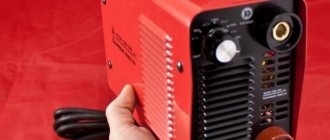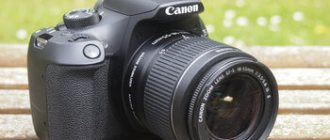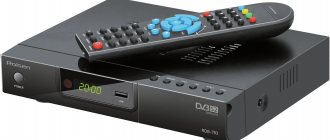Hearing problems? Adults and children with hearing loss may have varying degrees of auditory perception disorder. What are these disorders?
- Depending on the manifestation, quiet, medium and loud sounds are not heard; All sounds are heard quieter than they actually are; The speech of the people around you sounds unintelligible, and there is a strong feeling that those around you are not speaking clearly.
- Loud sounds can cause physical discomfort (observed in some patients).
- The perception of high-pitched sounds - whistling, hissing, dull consonants or consonant sounds in general - is impaired.
- The ability to distinguish between 2 different sounds by frequency, duration or pitch is impaired.
- Binaural hearing is impaired: it is difficult to determine the source of sound, difficulty understanding speech in noise, difficulty understanding speech when talking with several speakers at the same time, in rooms with high ceilings (churches).
- The presence of continuous or frequently occurring noise/ringing in the head or ears, which has a negative impact on speech intelligibility, a person’s emotional state, and even performance (observed in some patients).
- Slow speech processing speed
- Due to the fact that the main problem of auditory perception is that sounds are heard quieter than they actually are or are not audible, hearing aids help most people cope with this problem.
What is a hearing aid?
A hearing aid (HA) is a device for amplifying speech and other sounds.
Main functions of the hearing aid:
- Amplification of sounds
- Ensuring the purity and quality of amplified sound
Without what parts is a hearing aid impossible? A hearing aid is a high-tech device consisting of the following parts:
- A microphone or two microphones. The microphones in the hearing aid pick up sounds around you and transform them into electrical signals.
- Amplifier – necessary to amplify the electrical signal. The power of the hearing aids depends on the power of the amplifier.
- Telephone – converts electrical signals back into sounds.
- Power source (batteries, batteries) – needed to provide power to the SA.
There may also be controls present - they adjust the volume and change the settings of the hearing aid. And also in digital hearing aids there must be an analog-to-digital converter and a microcircuit - these are the parts of the device that make it possible to achieve the greatest intelligibility and comfort from wearing the hearing aid when adjusting.
Modern hearing aids are digital devices. They not only amplify all sounds, but also have the following functions: suppression of ambient noise, directionality of perceived sounds by microphones, suppression of feedback (squeaking of the hearing aid), automatic adaptation to various acoustic situations.
To summarize, a modern digital hearing aid is a miniature computer. This became possible thanks to digital audio signal processing.
Tips for choosing
To choose a good product for your own use, you need to pay attention to:
- Digital. Suitable for people of any age, manufactured using the latest technology and available in different designs. They improve hearing as much as possible and perfectly suppress external noise.
- Analog. They enhance the sounds of surrounding factors. The devices cannot effectively suppress noise and highlight voices.
- Power. The parameter must not only correspond to the hearing loss, but also exceed the required level. This will ensure long-term use of the device.
- Noise suppression. The purpose of the function is to enhance the voice of the interlocutor, speech becomes clearer, and accompanying noise is reduced. The option is useful for hypertensive patients and people suffering from migraines.
4 / 5 ( 2 voices)
What are the differences between hearing aids?
There are several classifications that answer this question.
What types of hearing aids are there based on the type of sound signal conversion?
Analog devices - in such devices, all sounds are converted into electrical signals and amplified. These are some of the simplest hearing aids available. Such a device does not have the functions of suppressing ambient noise, suppressing feedback (squeaking from a hearing aid), directing microphones, and others. The entire spectrum of sounds is amplified equally, regardless of the nature of the hearing loss of a particular patient. It is adjusted using trimmers (electromechanical regulators) and controls on the device body.
Digital devices - perform digital processing of the amplified signal. Such devices are configured on a computer by programming the necessary parameters. At the moment, this type of hearing aids is the most common. This is due to its wide range of capabilities for the patient and adjuster, such as:
- high quality of transmitted speech due to noise reduction systems, speech extraction, speech amplification, microphone directionality, automatic adjustments depending on the acoustic situation)
- accuracy of adjustment in accordance with the patient’s audiogram (determination of a person’s hearing thresholds) due to the multi-channel nature of digital hearing aids. Channel – frequency range (band) within which sounds are processed. The greater the number of these channels, the narrower they are and the more accurate the adjustment to the shape of the audiogram inside the device.
- compensation for very severe hearing loss
Positive and negative!
Despite the fact that hearing aids help people with poor hearing to hear better, they have their pros and cons.
- small sizes, making them inconspicuous and difficult to notice;
- accuracy and clarity of sound transmission at any distance;
- Uninterrupted operation thanks to a replaceable battery.
- cannot be used by children under 12 years of age;
- intracanal devices are prohibited for use by people suffering from ear inflammation.
Types of hearing aids
Also, depending on the place on the body on which the device is worn, there are:
Behind-the-ear hearing aids (BTE)
Behind-the-ear (BTE) hearing aids are the most common type of hearing aid. The main parts are located in a plastic case and are placed behind the ear. There are regulators on the case, which can be paired with remote controls. BTEs can be miniature - micro options. The earhooks are easy to operate, reliable, and with careful maintenance can require minimal maintenance. In this segment, there is a wide variety of models designed for different hearing losses, including very profound ones. Suitable for all categories of citizens: both children and elderly people. There are waterproof models.
BTE with remote receiver (RIC)
Behind-the-ear aids with an external receiver (telephone) RIC - the peculiarity of this model is that one of the parts of the apparatus is moved outside the body and placed in the ear canal. It is connected to the device using a thin wire. What does this give? One of the advantages of such a SA is its cosmetic properties. This device can be called the most inconspicuous of all behind-the-ear models. Secondly, you can change the power of the hearing aid by replacing only one part. Also, an important advantage is less distortion and, as a result, better speech intelligibility. This effect is achieved due to the close location of the amplifier to the eardrum. As a rule, device models with a remote receiver are equipped with a control button or do not have regulators. It is possible to connect remote controls.
In-the-ear hearing aids
Located in the ear canal and auricle. All electronic components of such a hearing aid are built into a housing made from an impression of the ear canal. Such a hearing aid occupies the entire auricle or part of it.
In-ear devices (ITE)
In-ear hearing aids (ITEs) are suitable for people with mild to moderate hearing loss because the size is directly related to the power of the hearing aid. They are not very noticeable, thereby providing cosmetic appeal. Some models have controls or the ability to connect to remote controls.
In-canal hearing aids (CIC)
In-the-canal hearing aids (CIC) are located in the ear canal and partially in the pinna. These devices are smaller and more discreet than in-ear models, but also less powerful and are suitable for people with mild to moderate hearing loss. May have regulators. They are located deeper than in-ear hearing aids, providing natural sound due to the close location of the amplifier to the eardrum and additional resonance of the auricle.
Invisible hearing aids (IIC)
Invisible hearing aids (IICs) are located in the ear canal, close to the eardrum. They are absolutely invisible. It is possible to remove such a device from the ear using a special fishing line. These devices are designed for minimal hearing loss. They do not have regulators, but can be adjusted using remote controls.
Due to their size, they are not suitable for people with motor impairments.
The hearing aid amplifier is constantly exposed to the negative effects of wax and moisture inside the ear canal, so enhanced care (cleaning, drying, replacing wax filters) and periodic maintenance are required.
Pocket devices
Pocket devices - all the parts of such a device are placed in a case that can be placed in a pocket or hung around the neck. From the case comes a wire with an earphone, which a person inserts into the ear canal. The advantage of such a device is that in case of serious motor impairment in the patient, it is easier to handle a pocket device, because it is significantly larger than behind-the-ear and, especially, in-ear models. The batteries used in such devices are AA batteries. They are more durable than zinc air batteries and are affordable.
The disadvantages are the size and the impossibility of making precise adjustments on the computer of such a device.
Most popular models
Advertising:
There are a large number of manufacturers that market hearing aids. Each of them has its own positive and negative qualities. Therefore, it is important to read the description and reviews first.
- Siemens (Digitrim 12P, STF P T3)
. Models are produced at an average price of 15-20 thousand rubles. A large assortment is presented. The devices are reliable, rarely break down, have optimal functionality, and a pleasant appearance. - Widex (Call-Dex, Dream Dm CB 50)
. The company was the first to market a digital model of the device. It is easy to operate. But the price is not cheap, it can reach up to 100 thousand rubles. - Sonata (U-03, U-05)
. The devices are produced in Russia at an affordable price, no more than 15 thousand rubles. These are high-quality and reliable devices with simple sound adjustment. - Oticon (JH-113, V-185)
. The devices have an average price, 30-90 thousand rubles. Produced in Denmark, they are represented in a wide range. When using a high-quality model, the sound becomes clear. - Phonak (Sky)
. Powerful devices that compensate for severe hearing loss. They have an optimal anatomical structure suitable for the auditory canals. The price is 6-50 thousand rubles. - Resound (MA2T70-V, MA2T70-V)
. The devices are suitable for people with hearing impairment. The price is no more than 80 thousand rubles.
The selection of a hearing aid should be made with high quality, under the supervision of a doctor. It is better to buy a device once than to constantly change or repair it. An otolaryngologist or a salesperson from a hearing aid store can help with this.
What characteristics of hearing aids should I pay attention to?
Modern devices allow you to implement many functions. Depending on the model, the device can have from 20 to 50 characteristics. Main characteristics of hearing aids:
- Power (maximum output sound pressure level). Hearing aids can be:
- low power – designed to compensate for 1-2 degrees of hearing loss;
medium power - to compensate for 2-3 degrees of hearing loss;
- powerful – compensate for 3-4 degrees of hearing loss;
- super-powerful or super-powerful – compensate for grade 4 hearing loss and deafness.
- The range of frequencies transmitted by the hearing aid - the lower frequency limit varies from 200 Hz to 400 Hz, and the upper limit - from 3 to 10 kHz. The wider the frequency range of the hearing aid, the better the quality of speech and music the patient hears.
- Number of hearing aid channels. Most modern hearing aids are multi-channel. The minimum number of channels is 2. Channels are bands (frequency segments) within which the audio signal is processed. There are also channelless hearing aids - sound signals in such devices are continuously processed at high speed throughout the entire frequency range. This requires significant computing power.
- Microphone type: omnidirectional - its operation does not depend on the direction of the sound source, perception is the same from all sides; Directional - better perceives sound coming from a certain point in space around a person. This type of microphone allows you to better perceive speech in noisy situations. Directional microphones can have a fixed (set) directionality, as well as adaptive - it changes depending on the sources of noise and speech.
What do you need to choose a hearing aid?
- You must first undergo an audiological examination
- Next, the specialist will evaluate the resulting data and suggest models of hearing aids that match the power and functionality.
- Initial fitting of a hearing aid by an audiologist
- Adaptation to the hearing aid by the user
- Final, precise adjustment of hearing aid parameters based on patient assessment data.











